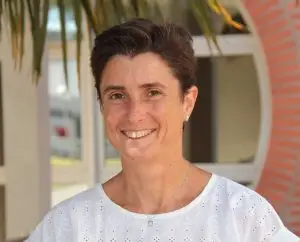Digitalisation – A review of the Workshop

Corinne Bieder
Head of Safety & Security Research Programme at ENAC, France
Participating in the first DigitATMisation conference was a great opportunity to grasp the complexity of the issue. Organized around three types of “profiles”, namely, transformers, enablers and disruptors, it allowed different views and perspectives to be expressed on the digitalization of ATM, and, more importantly, started a dialog between the various stakeholders.
Key words were introduced and discussed beyond digitalization, such as business model, efficiency, capacity, automation, technology, new comers/UAVs/drones, threat, opportunity, the two last ones sometimes referring to the same phenomenon. Number of questions were raised as well: Why investing on legacy technology? Why remaining tightly coupled to suppliers, dependent from single service providers? Why should we develop our own systems while some recent technologies were developed and tested in other industries? How could the legacy systems cope with the forecasted traffic including UAVs in the coming years? Is there a need for change? Do we have the choice or are we forced to change? Why should the public have access to more data than what we are using? How to consider humans in design? What role should regulation play in innovation? Will we accept an accident with UAVs? What is the intention of unmanned aviation? How can we enable and deliver added operational performance i.e. capacity, delay reduction, environment, flight efficiency, minimum emissions, cost, safety?
Of course, neither all key words nor all questions were raised by all speakers or participants. Yet, all these questions make sense, but what is even more important is that they make sense together at the same time. They reflect different perspectives, different angles to the same situation. In other words, they help building as complete as possible a picture of a complex reality. The trap would be to oversimplify it. Yes, digitalization is an opportunity to reduce costs, share data, provide new services…, and yes, at the same time, it is a threat in terms of new security challenges, unimagined types of failures…, not to mention the challenges that are in reality associated more with automation than digitalization per se, such as the role of humans in the system, capability to manage the unexpected…
What the conference highlighted is a series of tensions between different angles to the same reality: tension between digital agility and structural rigidity in the sense that stakeholders want to keep their business running with at least the same scope and hopefully an extended one; tension between digitalization as an opportunity to reach beyond current limitations, even develop new services and digitalization as a threat for new comers are emerging, new unanticipated failures are possible, more capabilities than “we” need will be available; tension between a techno-centered approach where humans need to adapt and a more distributed approach where human, organizational, ethical, legal, regulatory aspects are thoroughly addressed…
Ultimately, no one is right or wrong. Considering one angle to the detriment of others would be a hazardous simplification of the actual complexity of today’s and tomorrow’s “aviation”. Interactions between the various stakeholders, including the digital new comers that apparently didn’t accept the invitation to participate in the conference and the civil society are a great way to embrace the topic in all its dimensions. Yet, it seems that interactions between stakeholders of the so-called air transport system are rare, making this notion of system relative or limited to ongoing operations. The DigitATMisation conference, by bringing together a variety of representatives from a variety of organizations and encouraging exchanges and discussions was a very nice step in this direction!



